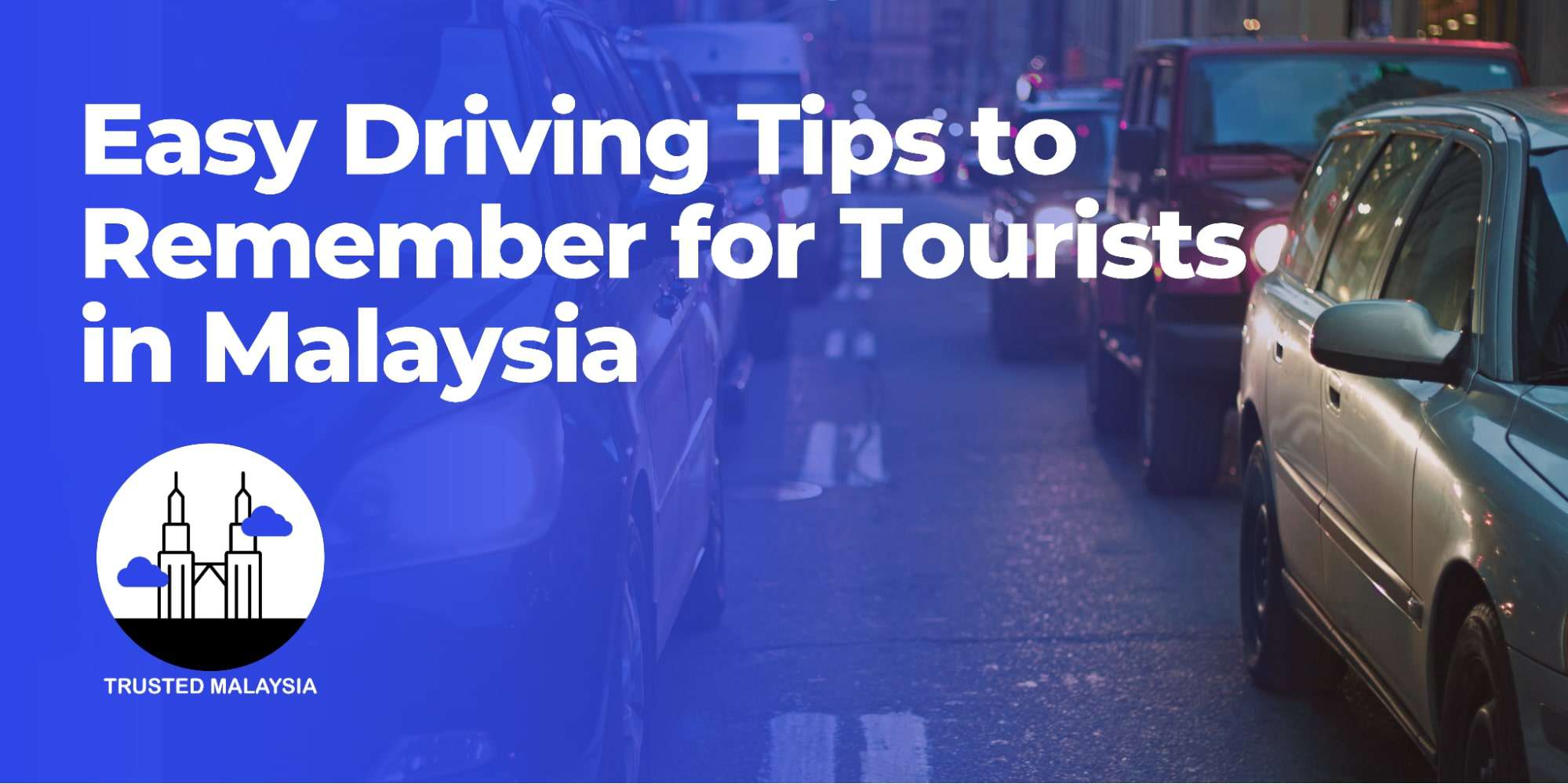Easy Driving Tips to Remember for Tourists in Malaysia
Statistics show that Malaysia has one of the worst road safety records in Asia. Though it has good infrastructure, many Malaysians tend to ignore traffic rules.
Also, traffic rules and regulations in Malaysia are somewhat different from the rest of Asia. If you’re driving in Malaysia as a tourist, we listed some easy-to-remember driving tips to help you navigate the roads easily!
Driving Tips for Tourists in Malaysia
1. Confirm your license’s validity in Malaysia
Before anything, confirm that you are able to drive in Malaysia with the help of your driver’s license. Anyone who has an international driver’s license and a Commonwealth Country Driver’s License is typically allowed to drive in Malaysia.
For up to three months, foreign nationals who want to drive in Malaysia are not obliged to possess a Malaysian driver’s license. They only need a valid driver’s license and a translation into English or Malay from the country where they originally obtained the license.
Other than that, the Road Transport Department issued a Vehicle Entry Permit (VEP), which authorizes the entry of foreign vehicles into Malaysia. All foreign-registered vehicles entering Peninsular Malaysia must have their owners registered online for VEP.
2. Know the speed limit.
Generally speaking, the speed limit in town is always between 60 and 80 km/h, but on the North-South highway, it can vary between 90 and 110 km/h. Additionally, you should be aware that there are several strategically placed speed cameras, so please do not drive too fast.
Another thing to note is that on a three-lane highway, the slow lane is in the leftmost lane, and the fast lane is in the rightmost lane. When traveling at a constant speed or when not overtaking other vehicles on a three-lane expressway, you may stay in the middle lane.
This gives you an idea of where cars stay when traveling on main roads.
If by any chance, you fail to remain under the speed limit, there are sanctions and demerits given by the Malaysian authorities.
- 1 ~ 25 km/h: RM80 (6 demerit points)
- 26 ~ 40 km/h: RM150 (8 demerit points)
- Over 40 km/h: RM300 (10 demerit points)
3. Be cautious when driving around the streets.
We’ve all heard the terrifying accounts of robberies, thefts, and carjackings. But overall, Malaysia may be a secure location provided you take the necessary security measures to protect yourself and your things.
According to research by Zutobi, an online driver’s education company, Malaysia has ranked 8th in the top 10 most stressful countries to drive in. Other countries that made the list are India, Thailand, Argentina, Brazil, the United States, and South Africa.
Furthermore, Malaysia’s overall safety driving score was only 5.63 out of 10, according to the same studies. On the bright side, this country has the lowest percentage of alcohol-related deaths, at only 0.1%.
The Malaysian Driving Culture: A Brief Overview
With 93% of families having a car, Malaysia boasts the third-highest rate of car ownership in the world. Although Malaysians are generally better drivers than those from other Southeast Asian countries, they have the habit of disregarding traffic laws.
However, outside of the city limits, drivers appear to be more relaxed. On some roadways, you’ll even have the chance to take in the breathtaking scenery of the valleys and rainforests.
Finally, compared to large European and North American cities, Kuala Lumpur and other Asian cities have a higher proportion of motorcycle riders on the road. So, you must be cautious when driving near them and pay extra attention to your blind areas.
4. Stay on the left side of the road.
Malaysia is one of the 74 nations that drive on the left side of the road due to historical reasons. You will probably need some assistance getting used to driving on the left side of the road if you are one of the 65% of people in the globe who drive on the right side of the road.
Before anything, confirm that you are able to drive in Malaysia with the help of your driver’s license. Anyone who has an international driver’s license, a driver’s license from a Commonwealth country, or a license with romanized letters is typically allowed to drive.
5. Park your car in a safe place.
It’s important to select a parking space in a well-lit location or at the very least close to other vehicles. It’s a good idea to take a few extra measures if you want to park somewhere overnight.
Something you can do if you’re leaving your car parked for an extended period of time is to consider investing in a steering lock and disconnecting your battery. Thieves often seek simple targets, so take any steps necessary to make your vehicle less appealing to them.
Although there are clever ways to combat auto theft, the best strategy is still to reduce crime. The majority of condos offer fenced and gated parking spaces for rent.
Select a parking space in a well-lit area or at the very least close to other vehicles.
6. Maintain a safe distance.
Wherever practical, you should always strive to keep a 3-second following distance. This offers you more time to respond in the event that the automobile in front suddenly applies the brakes or collides with another car.
This applies to basically any country you go to but is also helpful in avoiding accidents with the locals in Malaysia.
When driving on the highway, keep a safe distance from the vehicle in front of you. The spaces between cars on Singapore’s expressways are probably nothing new to you, but on Malaysia’s highways, the spaces should be wider.
If you were to be involved in any accident, here are some hotlines that you can call:
7. Get used to the mechanics of cars in Malaysia.
Cars in Malaysia are somewhat different when compared to cars in other Asian countries as well as ones in the west. The indicator light switch is typically on the right in Malaysian cars, while the windshield wiper switch is typically on the left.
Before going on a trip make sure to check the important car controls, including the boot and fuel door release buttons, the wiper controls, and the indicator lights.
There is another thing to note though, The only electronic payment method utilized by Malaysian toll expressway and highway operators is the Touch ‘n Go smart card which you’ll have to load and ask about when in the country.
Other Things to Remember When Driving in Malaysia
Stay on the left side!
When driving in Malaysia, never forget to stay in the left lane at all times. It could take some getting used to locating the car at the “center” of the road if you have always driven on the right side of the road.
Check your corners.
When you turn into a corner, you might be tempted to move into the right lane if you are from a country where driving on the right is the norm. Make it a habit to check your corners before making a sharp turn or any turn in general.
Go right when overtaking.
Those who want to drive faster should stay in the right lane, which is known as the “fast lane.” You can pass the vehicle in front of you from the right if you’d like to do so.

